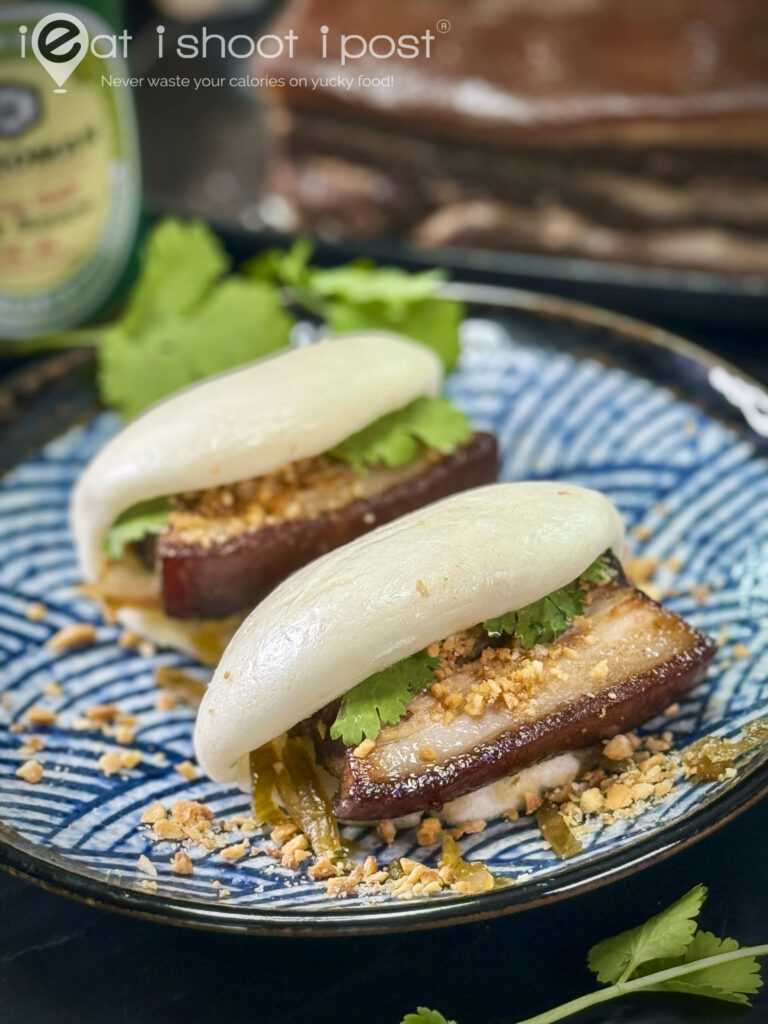
Local Kong Bak Pau vs Taiwanese Gua Bao
The inspiration for this Taiwanese Gua Bao came from my visit to Abundance, a small Taiwanese café located at Jalan Besar. I found that the addition of ground peanuts, salted mustard greens, and coriander leaves really brought the Kong Bak (Braised Pork) pau to another level! Of course, you can easily omit these extra ingredients and enjoy the pork belly in the bun with a slice of lettuce for crunch!
There are numerous methods for preparing Kong Bak, some involve intricate steps such as deep-frying till the skin is blistered and then soaking it overnight…. DO NOT WORRY! This is not that kind of recipe! Instead, it is tailored for busy individuals seeking an uncomplicated method for making Kong Bak. All you need to do is place the pork belly and braising sauce into a loaf pan, seal it with aluminum foil, and let it cook in the oven for 3 hours. The result? Tender, melt-in-your-mouth pork belly that’s sure to delight your taste buds!

Kikkoman Less Salt Soy Sauce: Same Fragrance and Umami!
For this healthier recipe, we will be using Kikkoman less salt soy sauce. Too much salt in the diet can lead to hypertension, so it’s a good idea to try to reduce the amount of salt when you are cooking at home. Kikkoman less salt soy sauce is naturally brewed with soybeans, wheat, salt, and water, just like the normal soy sauce. After fermentation, it undergoes another desalination process to remove the salt. In this way, you get a lower-salt soy sauce without compromising its fragrance and umami.
Kikkoman soy sauce is also darker than Chinese light soy sauce, so you don’t need to add any dark soy sauce to obtain that lovely dark bronze color on the skin of the Kong Bak. If you have found Japanese soy sauce slightly saltier than local soy sauce then this version might suit you. The unique fragrance of Kikkoman soy sauce is quite distinct and many Chinese chefs will always have a bottle of Kikkoman Soy Sauce in their pantry!
Recipe
Yields: 10 – 12 pieces
Preparation Time: 15 mins, overnight (marinating)
Cooking Time: 3 hours
9×4 inch loaf pan
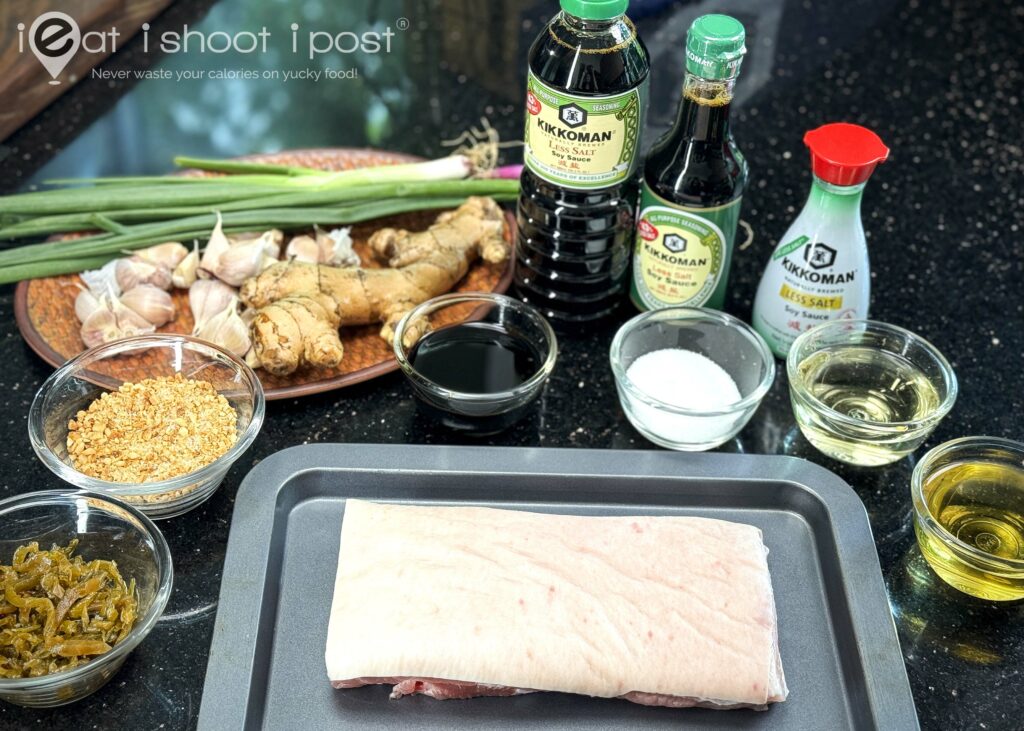
Ingredients
Pork Belly 700 – 800g (12cm width)
Ginger 2 slices
Garlic 2 cloves
Spring Onion 2 bunches
Sauce
Kikkoman Soy Sauce Less Salt 100ml
Mirin 100ml
Sake 100ml
Sugar 50g
Water 100ml (or just enough to fill the pan)
Bun and Condiments
Lotus Leaf Buns
Ground Peanuts (with sugar if you like it sweeter)
Sour mustard greens with chilli (or any pickle that you like)
Coriander Leaves
Method
- Preheat oven to 130°C
- Scrape the surface of the pork with a knife to remove any hair or dirt. Wash and pat dry.
- Slice ginger, lightly crush garlic and place in loaf pan together with green onions,
- Add mirin and sake into pot, bring to boil and boil off the alcohol
- Add soy sauce and sugar and stir till sugar is dissolved
- Add sauce to loaf pan, top with water and cover with paper towel
- Cover tightly with aluminium foil and slow cook for 3 hours in the oven
- Allow to cool, then remove aluminium foil and remove the pork belly and place in separate container
- Allow to cool in the fridge for the pork belly to firm up. It can be kept in the fridge for a week
- When ready to eat, slice the pork belly and pan sear, microwave or steam to reheat
- Steam buns at the same time
- Add pickled sour mustard, pork belly, peanuts and coriander leaves
- Eat and roll your eyes in delight
Preparation Details
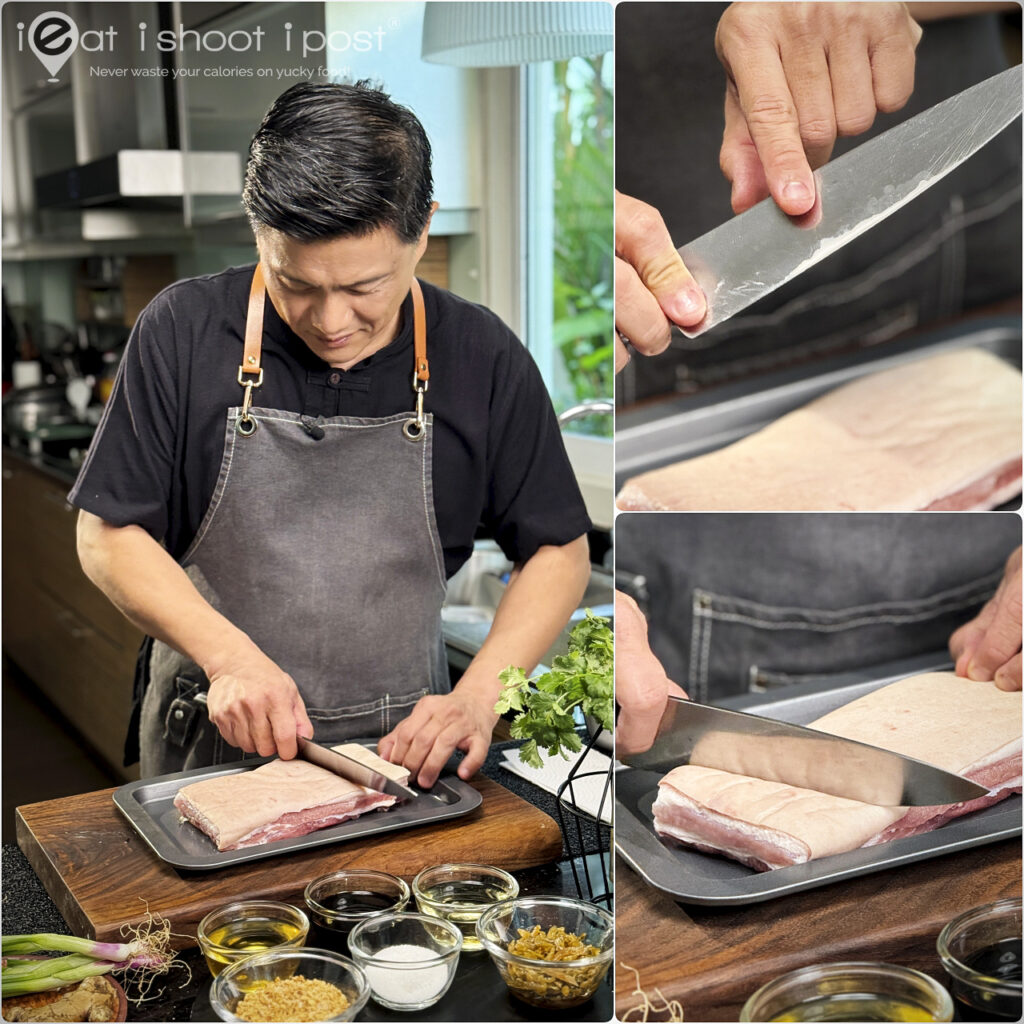
Make sure to run your knife blade across the skin side of the pork belly to remove any hair and to clean the surface properly.

Lay ginger, garlic and green onions on the bottom of the pan and lay pork belly on top. (skin side down)
Making the Sauce
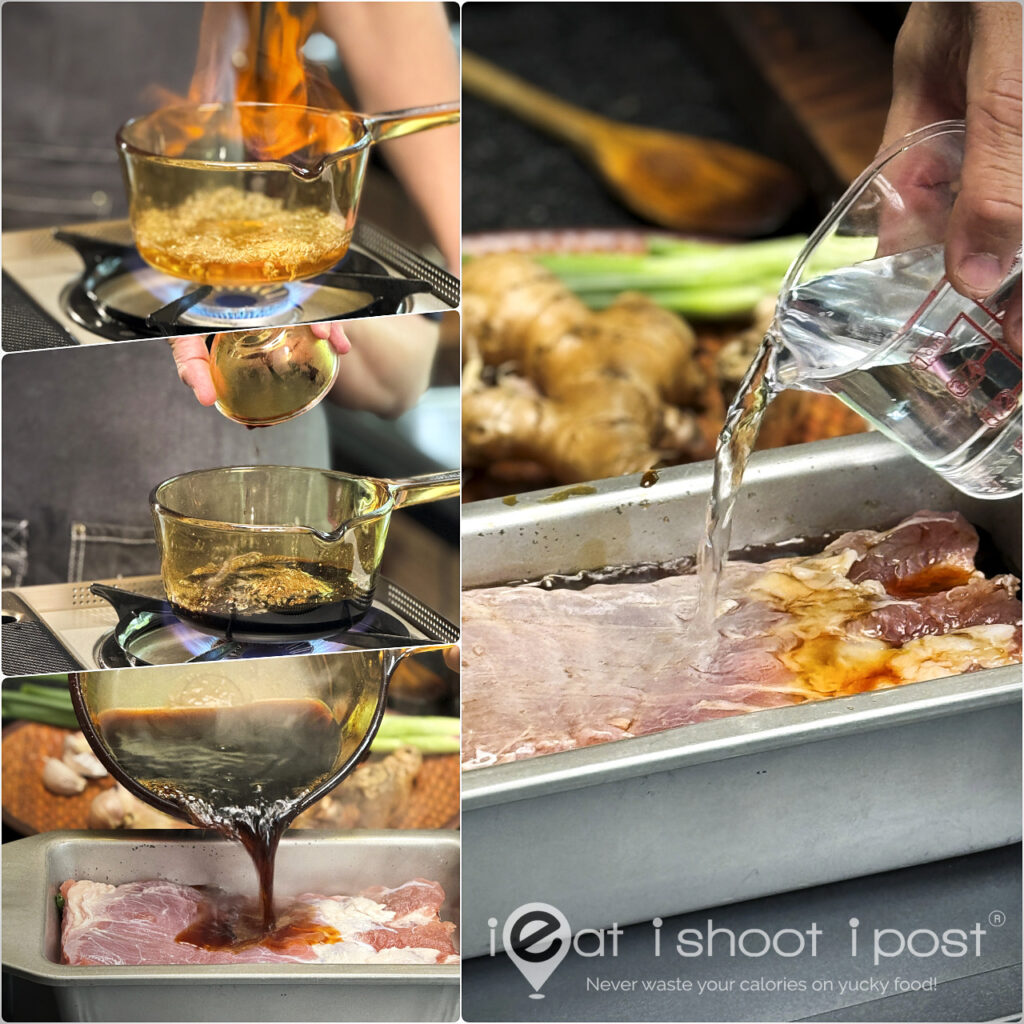
Add mirin and sake to pot and bring to a boil to boil off the alcohol. Add soy sauce and sugar and stir to dissolve the sugar. Then pour the sauce and water into the loaf pan, ensuring there is enough liquid covering the pork.
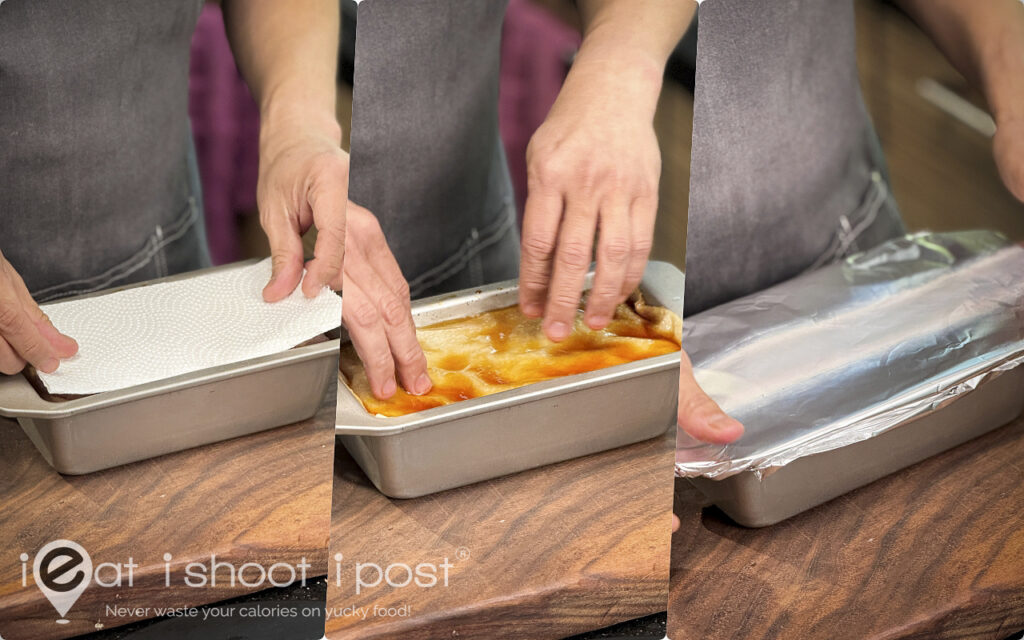
Lay a double layer of paper towel on top of the pork belly and add enough water to reach the rim of the pan. This way, the underside of the pork belly will also be covered with the sauce. Cover with aluminium foil and seal to prevent evaporation of the water.
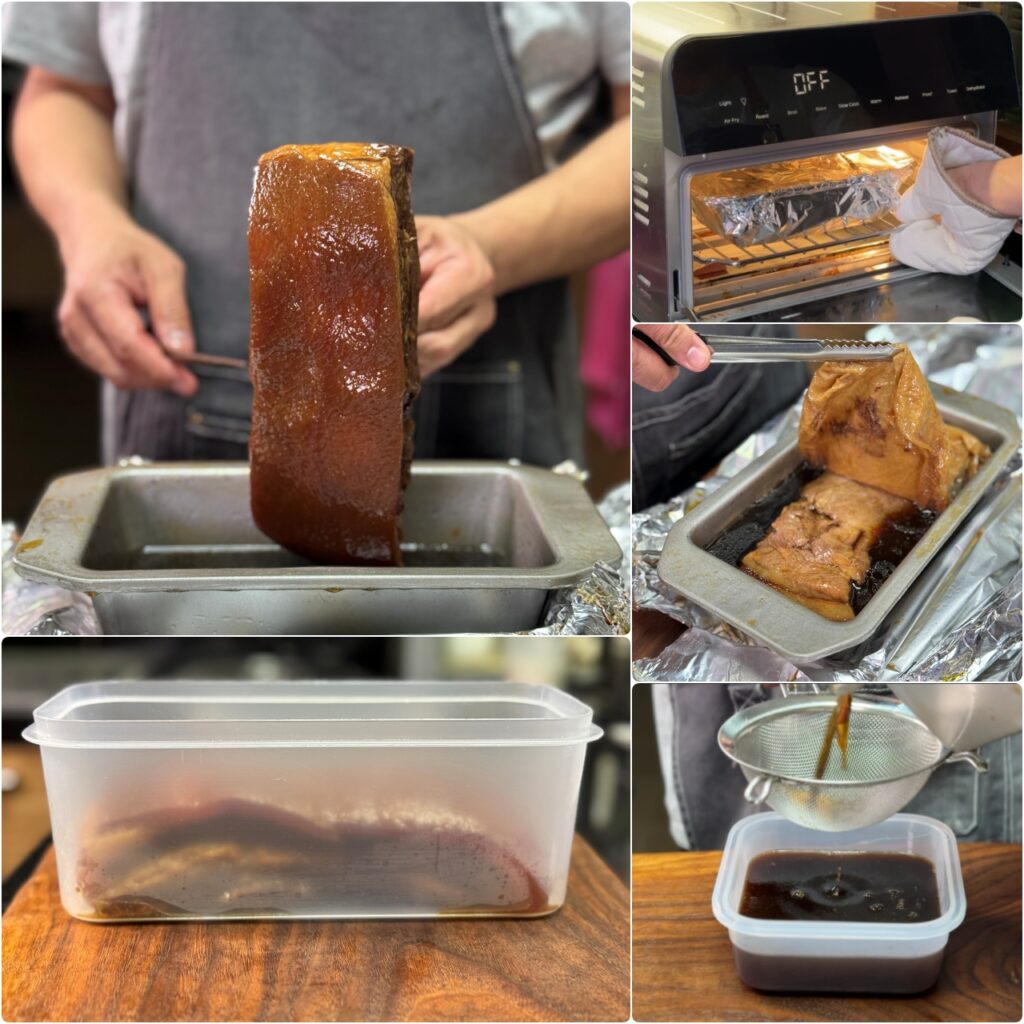
Bake in the oven at 130°C for 3 hours unattended. Allow to cool, then remove the pork and chill in the fridge until firm enough to slice. I usually leave it overnight. You can eat it immediately, but it will be more difficult to slice nicely.
Do not throw away the sauce. Sieve out the spring onion, garlic and ginger and store the sauce in a separate container. The sauce may be used for ramen eggs. Alternatively, you can use it again to cook the next piece of pork belly. In that case, you won’t need to add any more aromatics. Just add the sauce to the loaf pan and top with more water.
When you’re ready to asssemble
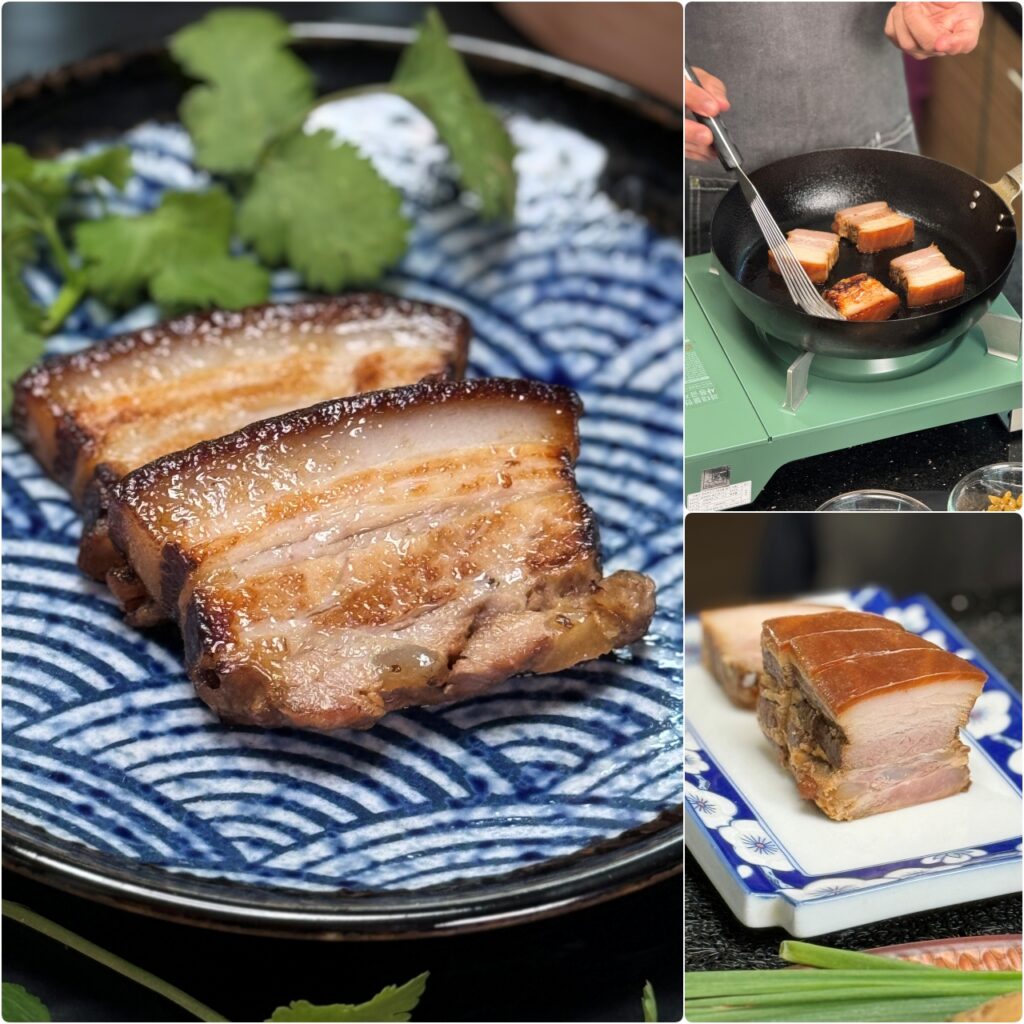
I like to lightly pan sear the pork belly to caramelise the surface and warm up the pork at the same time. If you have a blow torch, you can also torch it like how they do at Japanese restaurants. You can also microwave to warm up the pork or steam it if you like your pork to be really soft and jiggly.
You may thickened some of the sauce you’ve put aside with a little bit of cornstarch. And drizzle over the pork belly if you like.

Finally just insert the seared pork into freshly steamed lotus leaf buns along with some sour mustard greens and ground peanuts.
Conclusion
This really is the simplest way to cook braised pork. It can be done on a weekend and the pork can stay in the fridge until you are ready to eat it midweek! I hope you try it and let us know how it goes!
This post was written in partnership with Kikkoman Singapore.




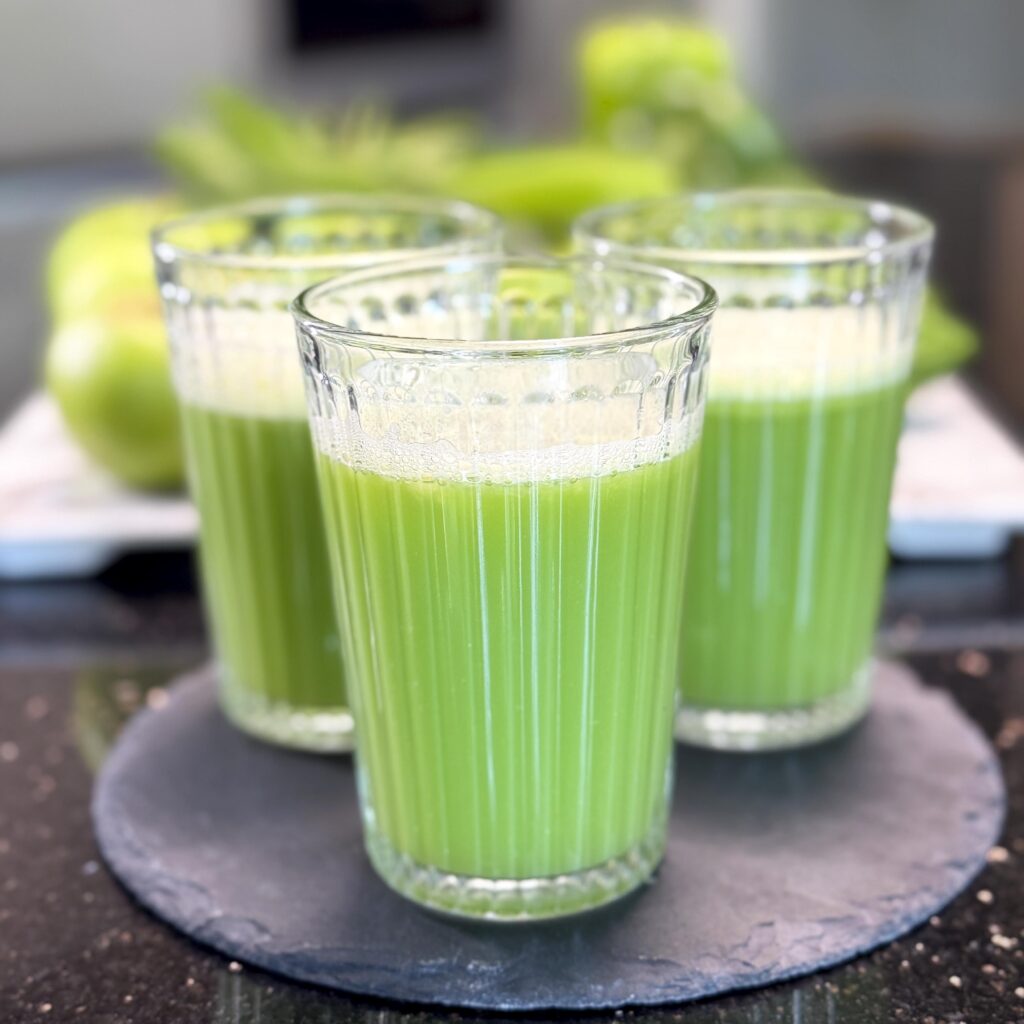
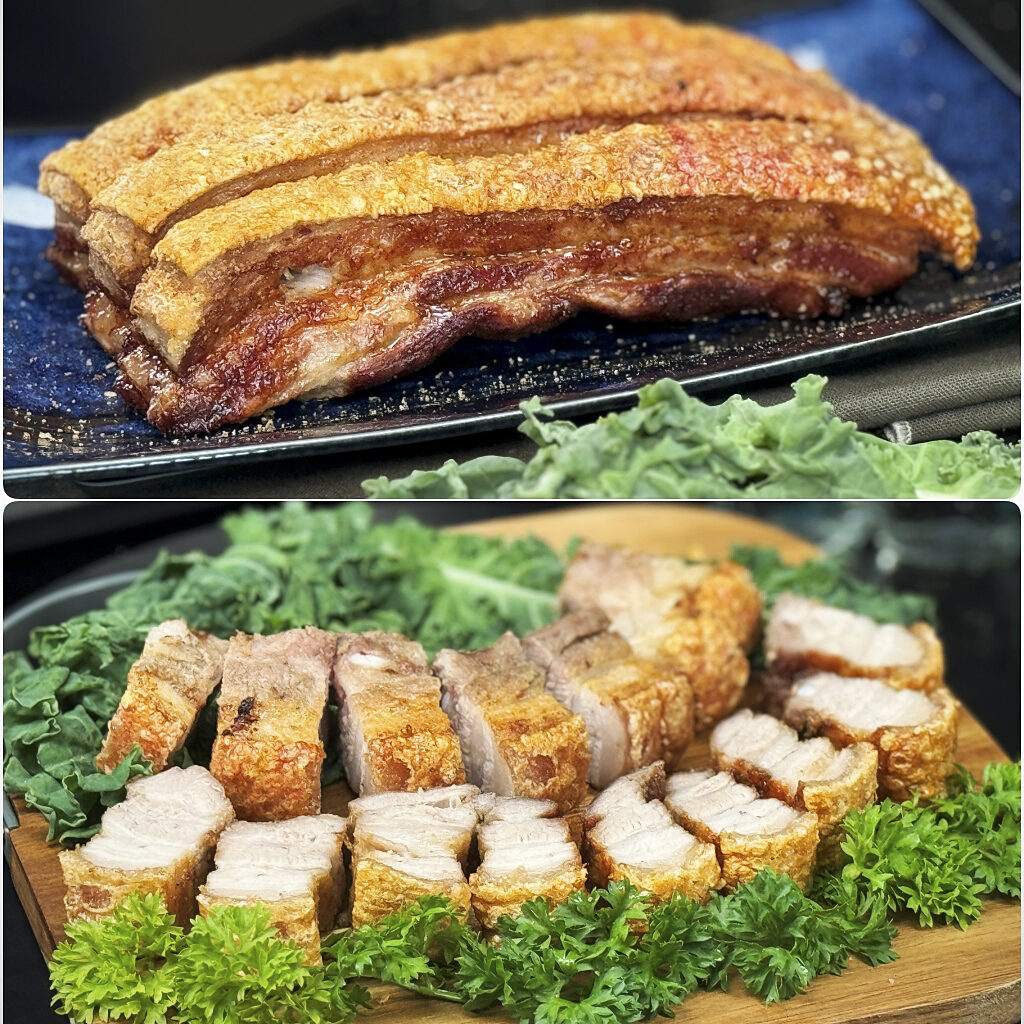

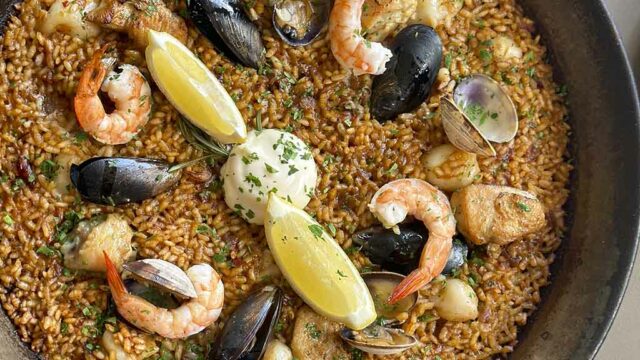




Hi Leslie, do you leave the paper towel in the pan while cooking in the oven?
Yes you do. The paper towel will help to ensure that the top of the meat is soaked with sauce too during the cooking process.
Thanks for the reply, Lisa!
What can I do with the leftover sauce that I braised the pork in? Should I keep it for something – feels like a bit of a waste to throw it out.
Yes do not throw it away. As mentioned in the article, you may reuse if for another round of braised pork or for ramen eggs. 🙂
Keep it for the next batch!